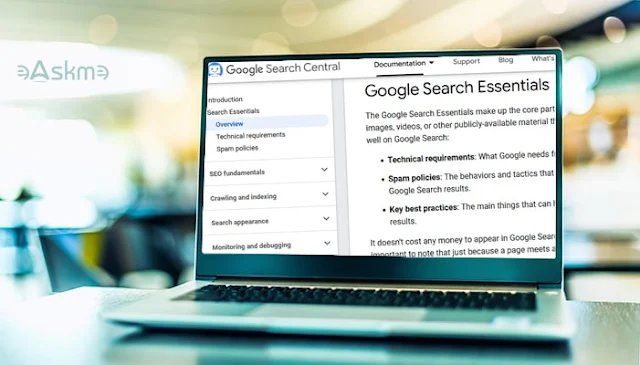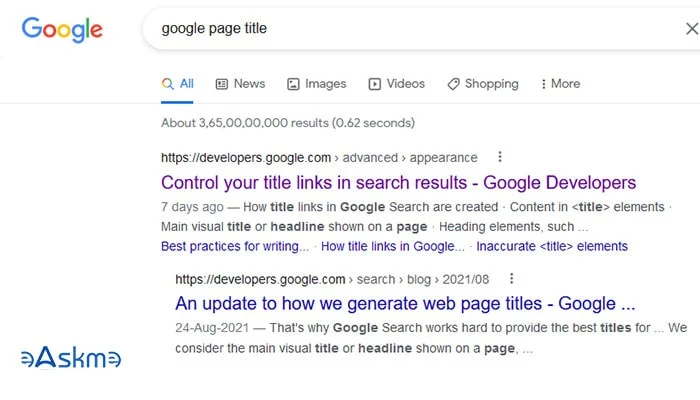Google webmaster guidelines help you and SEO professionals create a website according to Google's expectations.
With the help of the latest Google Webmaster Guidelines, a webmaster can improve SEO techniques to meet Google's guidelines.
You cannot ignore these guidelines. Ignoring webmaster guidelines will make you invite a manual penalty or algorithm penalty.
 |
| Google Webmaster Guidelines: Everything that You Must Know: eAskme |
Other people are at: Things Every SEO Newbie Has to Know : The Ultimate SEO Guide for Beginners
If the issue is significant, then Google can ban your website from showing in SERP.
Understand Google Webmaster Guidelines to avoid potential damage to your website or blog.
According to Google's guidelines, there are multiple ways you can optimize your blog, content, or website.
Garry lllyes and John Muller has answered a lot of questions on Twitter also.
Most of the time, these guidelines are talking straight to the point.
Google keep on updating webmaster guidelines.
It is necessary to keep an eye on these guidelines and stay updated. It will help you know about any changes.
For example, Google guidelines say that your website must be HTML/CSS and code must validate with W3C.
It is not a direct sign to get a better ranking. But it will surely improve user experience as cross-browser compatibility is essential for user experience.
Google Webmaster Guidelines is to guide you about solving specific issues to better your blog or website.
What are the Google Webmaster Guidelines?
I can divide Google webmaster guidelines into four parts such as;
- Content Specific-guidelines
- General guidelines
- Quality Guidelines
- Webmaster Guidelines
Webmaster Guidelines:
Webmaster guidelines is the set of best practices that you must follow to improve your blog or website.
This strategy will help to improve your overall Google search ranking.
The other three guidelines help you save your site from penalties.
General Guidelines:
In general guidelines, you will find best practices to help your blog or website look better in SERP.
Content-specific guidelines:
As the name suggests, content specific guidelines are the best practices to improve how you should use the image, videos, text, and any other type of content on your blog or website.
Quality Guidelines:
Ignoring quality guidelines can get your website banned. It is a must that you should follow Google webmaster quality guidelines.
The reason behind the availability of these guidelines is to help you save your site from Google penalties. These guidelines also tell that you should not write spammy content and focus more on users than search engines.
It is easy to say.
It is a challenge to create a website or blog, according to Google's Webmaster Guidelines.
But by understanding Google Webmaster Guidelines, you will be aware of what to do and what you must avoid.
After understanding Google Webmaster Guidelines, the ne3xt thing is to implement them on your website.
Use Relevant Keywords:
Make your blog/website discoverable.
The best way is to find relevant keywords is by following the top-ranking webpage and seeing what keywords they are using in the title and description.
For this, you should run the competitor analysis of the top-ranking website or blogs in your niche.
Many tools will help you run competitor analysis and find out how these sites are using keywords.
Issues:
You can have a website with no keyword at all.
You may have a list of keywords that all are branded, but no one has thought about optimizing the content or website.
Fix:
You need to do a lot of work. Run competitor analysis and find out the opportunities to optimize the keywords.
Remember: You can even optimize the terrible websites.
Internal-Linking:
You must link pages or posts so that they can reach by links from other discoverable posts or pages.
This makes internal linking important. Internal linking also helps to avoid dead pages issue.
Links are part of websites. You must optimize contextual links, navigation menu and breadcrumbs.
Make all the links crawlable by Google. It is essential for a great user experience. Do not repeat the same anchor text again and again.
Combine keywords with different but relevant phrases.
A strong website structure is when the webmaster hierarchically links the pages or posts.
This makes it easy for Google to understand the structure.
Issue:
Some sites have a lot of orphan pages.
Fix:
The easiest way to fix orphan pages is by linking to them from other relevant pages on your website. Else delete them.
Reasonable Linking:
Do not make your blog post or Website page look like your sitemap.
Google has made it clear that you should not use 100+ links on a page. But it does not mean that you must add 100 links to every page.
Linking become fruitful when relevant.
Add links according to the need and relevance. Take the user's point of view.
Too many links will make your content look like spam.
Issue:
Some sites may have hundreds or thousands of links on many pages. This becomes a problem when Google crawl such pages.
Fix:
Robots.txt and Crawling:
Robots.txt can help you optimize your crawl budget so that Google can easily crawl your blog or websites.
There are two ways to optimize your crawl budget;
- Optimize links on the blog or website
- Optimize robots.txt
Google has published this guide, to help you understand how to optimize robots.txt for better crawling.
Issue:
You may find sites that use robots.txt to block search engines from crawling the content or complete the website.
You may have a site that does not have sitemap.xml in robots.txt.
Fix:
Remove Disallow: /
Add directive to display sitemap location.
Create content-rich pages with a clear voice:
Google Webmaster Guidelines talks about information-rich pages. It may not be easy to find information-rich relevant competitors.
Information-rich term changes according to niche or industry.
With the help of competitor analysis, you will learn:
- What your competitors are writing about
- How top-ranking sites are writing about different topics.
Structure of your competitor's website.
Answers to these questions will help you understand how to follow webmaster guidelines.
Issues:
Sites with thin content.
Word count is undoubtedly not the end-all factor to improve your content ranking. Yet, it is essential for creating information-rich content.
Fix:
Get rid of thin content. Work on your content strategy.
Keywords and Queries:
What are people searching to find your posts or pages?
Keyword research will answer.
With the help of keyword research, you will learn how people are searching to visit your website.
An effective keyword research strategy is what you need.
You will focus on the target audience according to the site's niche or nature during useful keyword research.
It is essential to understand the buyer's persona.
Once you discover the target keywords, then you can easily do on-page optimization.
On-page optimization is also about how many pages on your website are mention the target keyword or query.
For the success of SEO, it is necessary to perform useful keyword research based on targeting.
Issue:
You may have a site with all the branded keywords. The chances are that the site content is not updated with relevant keywords, phrases, and queries.
Fix:
The best way to fix it is by optimizing keywords in your content. Use LSI keywords, queries, and targeted keywords rather than only using branded keywords.
Only use the keyword that your users are typing to find your pages.
This way, you make the visitors understand your blog posts or pages.
Hierarchy:
Have you organized your website by topical relevance?
Conceptual page hierarchy is essential for SEO.
Keep main topics on the top and subtopics under the main. This strategy is known as SEO silos.
Use the deeper conceptual page hierarchy.
You may consider creating a hierarchy that the main page should not go far away from 3 clicks or create in-depth content with hierarchy.
Must create a site that gives in-depth information.
Issue:
Your blog or site has unorganized posts or pages just there to fill your blog with content.
Fix:
Create a siloed architecture. Display your topical focus. It will help to improve ranking.
Crawl and index:
Make your whole blog and website crawlable and indexable.
Don't block Javascript or CSS.
Giving Google access to a complete website makes it easy for the search engine to understand your website thoroughly.
Issue:
You may have a site that blocks javascript and CSS using robots.txt.
Fix:
Use robots.txt to unblock CSS and javascript.
Important Content:
Ensure that the essential content of your blog or website is crawlable and visible by default. You should not hide important information behind tabs, buttons, etc.
Display important information in default page view.
Tabbed content is usually less accessible to visitors.
Issue:
You may have a site with tabbed content.
Fix:
Create fully visible content.
Google Webmaster Guidelines are Must to Follow:
Google webmaster guidelines are trustworthy guidelines.
These are not the rules, yet if you ignore them, then you will only make your website fall behind everyone else.
Always stay on Google's right side and prevent manual actions.
If your website hit manual actions, start working on fixing the issues.
Remember: Google has Introduced 12 new manual action penalties.
In case you have a terrible website, redesign it and its content.
p>Use Google Webmaster Guidelines knowledge to identify issues and fix them before it is too late. It is worth following Google's Webmaster Guidelines.For stable online performance, you must follow these guidelines.
Find this post helpful, don’t forget to share it!
Handpicked SEO Guides for You;
- How to Interlink Blog Posts in WordPress?
- OnPage Optimization Tactics that Google Hates
- How to Optimize Robots.txt?
- How to Optimize Breadcrumbs?











